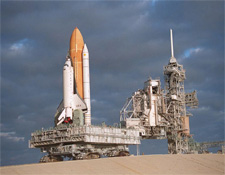
 NASA is the administration for national Aeronautics and Space. It is based in the United States and is in charge of research and discoveries in aerospace and aeronautics. There are many opportunities available at NASA for those who have a passion for atmospheric and celestial studies.
NASA is the administration for national Aeronautics and Space. It is based in the United States and is in charge of research and discoveries in aerospace and aeronautics. There are many opportunities available at NASA for those who have a passion for atmospheric and celestial studies.
Individuals who want to pursue a career at NASA must have degrees in engineering, aeronautics and astronautics, or anything else related to science or mathematics. Aerospace Engineering is an area of study which concerns the development of air and spacecraft, missiles, and other structures that function in aerospace. Aeronautical Engineering and Astronomical Engineering are the two subcategories that fall under Aerospace Engineering. Aeronautical Engineering is targeted for students who are interested in aviation. Astronomical Engineering is an option that would attract students who are interested in celestial objects and phenomena that happens beyond the Earth’s atmosphere. Other areas of engineering are ocean engineering, electrical engineering, and mechanical engineering. Those are a few subjects that are worth considering, but prospective students may study other focus areas as long as they are relevant. After choosing a field of study, prospective students must choose a school to enroll in. Below are seven schools that harbored students who went on to work for NASA.
There is also an astronaut candidate program for people who want to become astronauts. Applicants are required to have a Bachelor’s Degree in biological science, mathematics, engineering, or physical science. Candidates must have three years of experience related to the field they obtain the degree in. When those requirements are met, applicants may send in an application through the NASA site’s instructions. There is also a physical that they must pass to ensure that they are healthy enough to board long space flights.
Massachusetts Institute of Technology
Many well known NASA workers have attended Massachusetts Institute of Technology. Stephen Bowen, who later became a mission specialist for NASA in 2000, graduated from the institute with a degree in Ocean Engineering. Dominic Antonelli, Gregory Chamitoff, and Edward Fincke are three NASA employees who graduated from the same school with degrees in Aeronautics and Astronautics. Antonelli later became a pilot for NASA and Chamitoff did mission operations and developed software applications for Johnson Space Center in NASA. Fincke became a spacecraft communicator at International Space Station. What can be concluded from the four graduates mentioned above, is that Aeronautics and Astronotics is a good focus area to study.
United States Air Force Academy
United States Air Force Academy also has a history of graduates who progressed to NASA. Eric Boe and Benjamin Drew Jr. both received a Bachelor’s Degree in Astronautical Engineering at the Academy. Boe was later assigned by NASA as a pilot and Benjamin Drew a mission specialist. Gregory Johnson is an Academy graduate who received a Bachelor’s Degree in Aeronautical Engineering and went on to work in shuttle abort planning as chief. Terry Virts is another graduate of the Academy who pursued a Bachelor’s Degree in Mathematics. Like Eric Boe, he became a pilot for NASA soon after he graduated from the Air Force Academy. So as mentioned before, a degree in something as simple as mathematics is okay to pursue.
Stanford University
Stanford University was ranked high in the country for their aeronautical program.
Micheal Hopkins obtained Master of Science Degree in aerospace engineering. Spacecraft communicator, Mark Vande Hei, graduated from Stanford with a Master of Science Degree in Applied Physics.
University of Texas
The University of Texas has Karen Nyberg, who later became a co-op for Johnson Space Center, got her degree in Mechanical Engineering. Serena Aunon was a flight surgeon at NASA, and she also attended the University of Texas for her doctorate in medicine before starting her career as a surgeon.
Other Schools That Weren’t Mentioned
Besides the Universities and Academies mentioned above, there are other schools that birthed NASA employees. The University of Arizona, University of Texas, and Washington University are great schools which graduates got their degrees in chemical engineering, aviation systems, and many other majors.
Besides Mission Specialists, CO-ops, Flight Surgeons, Pilots, and the other professions mentioned above, there are some other career opportunities that are worth considering. A Launch Controller does prelaunch testing before space missions starts. Chemists work at space stations and facilities as specialists in anything related to chemicals. Pyrotechnics Experts work at test facilities where rockets and other devices that have firework effects are examined. Fire Protection Engineers apply their knowledge in engineering and science to implement fire safety.
NASA workers do not only consist of astronauts who embark on space missions and come back to Earth with discoveries and new information. There are people who work behind the scenes to bring about the greatest discoveries in space and Earth’s atmosphere. From engineering to serving as a healthcare provider for NASA workers, there are countless opportunities at NASA that can be had if an education in aeronautical, astronautical science or mathematics is obtained.
Or there’s me, from Creighton University, and I’m a full time NASA Scientist. You can work for NASA with almost any degree. Business, marketing, graphic design, journalism, English, we need them too. Check it http://www.thatgirlatnasa.com